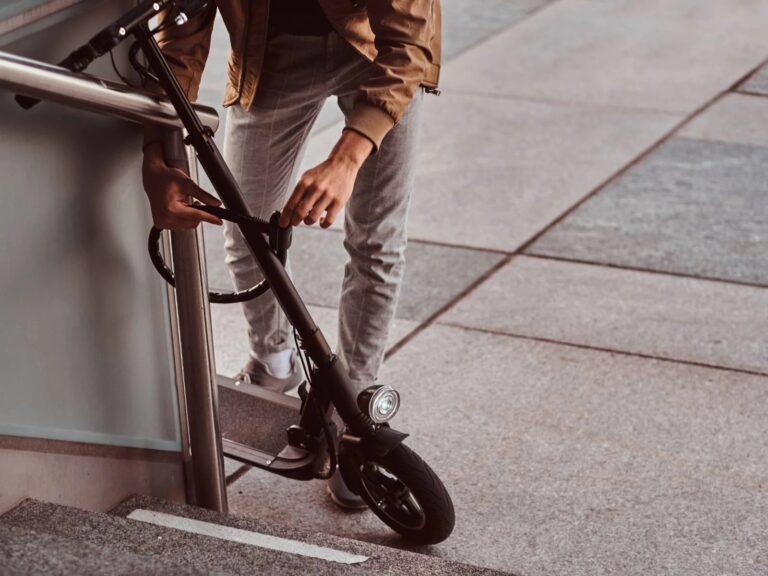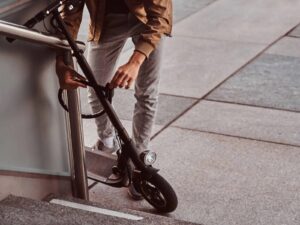There are many types of scooters that are now widespread in Australia because they save people time and money and reduce carbon emissions.
However, the licence requirements for scooters in Australia are less clear than for car licences. You may not be sure if you need a scooter licence in Australia.
That is what we aim to answer here, along with questions surrounding scooter engine sizes and capacity, speed and power restrictions, safe riding for scooters and more.
What are the types of scooters in Australia?
Before entering licensing requirements for scooters in Australia, you should know more about the popular scooter types. The most popular types of scooters are electric and motorised, both of which vary in price.
An electric scooter is a scooter powered by batteries. They are far more energy-efficient than motor scooters, and they cost less money in the long term due to using batteries instead of needing fuel.
While you cannot legally ride them in some Australian States and Territories, some Territories (like New South Wales) are currently undergoing e-scooter trials to determine if you can legally ride them there.
Motor scooters are scooters with an electric motor or an internal combustion engine. They are popular because they can travel long distances. Also, some people, including motorcycle riders and many other road users, prefer how it feels to ride a motorscooter. This may be because of the noise it makes.
What are the licensing requirements for scooters in Australia?
Potential scooter riders need to get multiple licence types if they want a licence to ride a scooter in Australia. For example, in New South Wales, the licences include:
- A learner’s licence (you get a learner’s permit before you get the licence).
- A provisional P1 licence.
- A provisional P2 licence.
- A full licence.
Also, not all states require a full scooter licence; you can use a C Class licence in the following territories.
- Queensland.
- South Australia.
- Western Australia.
- Northern Territory.
However, the following states only allow you to ride a scooter (electric or motor) with a licence.
- New South Wales.
- Tasmania.
- Victoria.
- Australian Capital Territory.
Getting a full scooter licence requires a P2 provisional licence for at least two years. Find out more in our scooter licence step-by-step guide.
Also, to apply for a scooter learner rider licence (the first one you need to get), learner drivers need to be at least 16 years and 9 months old. You must be at least 17 years old for a P1 licence.
Does a scooter’s engine capacity affect the licensing?
The maximum engine size to have a scooter licence is a 50cc scooter; you must have a licence in any Australian territory (Queensland, for example) with an engine this size or over.
A 50cc scooter is a scooter that has an engine size of 50 cubic centimetres; it has a fuel capacity of 50ml.
The engine size matters because a larger engine means more potential for danger, so you need a licence to prove you engage in safe riding.
What are the speed and power restrictions?
The speed restrictions for scooters in Australia depend on the territory. For example, in Victoria, one of the road rules is that you cannot ride an e-scooter at a faster speed than 25 km; you can use them in bike lanes, bike paths and shared paths (it’s 20 km per hour for private e-scooters).
However, the speed limit isn’t in question in some states because it is illegal to ride scooters. For example, in New South Wales, scooter hire is illegal due to the ongoing trial.
As for power restrictions, a scooter engine’s maximum power can affect licence holders and those wanting to get a licence. You need a licence if the scooter goes faster than 50 km/h for safety reasons. The Government considers it dangerous to ride over this speed if the rider has no experience.
What are the helmet laws and safety regulations?
The Road Traffic Code 2000 states that you can only ride a moped, motorcycle, or scooter with specific safe riding equipment, including a helmet that must fit and fasten securely to your head. You can get a $550 fine if you don’t comply with this rule.
To ensure you have a suitable helmet for safe riding, you need to try it on for size before you buy it; a loose-fitting helmet is dangerous because it can fall off during riding. Also, consider wearing a lighter-coloured helmet so other riders and drivers can see you. You should also avoid buying second-hand helmets because they could be in poor condition.
Other protective clothing you should consider includes:
- A jacket: for the most protection, get a jacket with built-in elbow and shoulder pads; these jackets are also tear resistant.
- Tight-fitting gloves.
- Boots: buy lightweight boots that offer enough protection.
Each state has its own safety regulations, so we’ll specifically go into the regulations from New South Wales for this post. The regulations for e-scooters include:
- Only use e-scooters through a shared scheme.
- You must be over 16 to ride an e-scooter.
- Do not exceed 50kph if riding on a road and under 10 on a shared path.
- Use lights on the scooter when riding in bad weather or at night.
- Do not exceed the 0.05 blood alcohol limit while riding.
- Do not use your phone while riding the scooter.
- Do not carry passengers.
- Ride in a single file.
Ensure you double-check the regulations in your locality.
What are the legal consequences of riding a scooter without a license?
The legal consequences of riding without a licence in Australia depend on what problem you have with the licence. For example, you can face a hefty fine, or the courts can seize your scooter if you ride with a suspended licence.
If you ride without any licence, the same can happen, or you can face jail time if you cause an accident. It is hazardous to ride without a licence, so the massive fines and other penalties reflect that (especially if you get into an accident).
To avoid the fines or impounding of your scooter, ensure you’re familiar with the specific regulations in your territory.
How to get a scooter license in NSW?
Getting a riding licence in Australia isn’t that simple, as there are multiple licences you need to get to get the full licence. For example, in New South Wales, there are three licences to acquire before getting a full scooter licence.
Here is the process for getting a scooter licence in NSW.
- Get a learner licence: You must be of age to get this (16 years and 9 months) and complete a pre-learner course and knowledge tests (you can start hazard perception tests after finishing these). Every state requires you to pass a knowledge test; find all the details to pass it in the rider handbook (including rider safe training).
- Get a Provisional P1 licence: To get this, you must be at least 17, have a learner licence for three months or more, complete a motorcycle licence skills test and pass the rider test. You can do this at a service centre; they won’t declare the area.
- Get a Provisional P2 licence: All you need to do to get this is hold your P1 licence for 12 months (at the very least). However, if you’re over 25 and have a full driver’s licence, you can skip this stage and apply for the proper rider licence.
- Get a full licence: To get this, have your P2 licence for at least 2 years (you can skip the P2 stage if you have a full driver’s licence).
How does getting a scooter licence compare to other modes of transportation?
In some ways, the process for getting a scooter licence is similar to other modes of transportation, but there are key differences.
- Getting a scooter licence is more straightforward and quicker than getting a driver’s licence; they are fewer tests to prepare for, for example.
- Buying a scooter and licence is cheaper than doing the same for a car. They’re also more affordable to run than a car due to the need for less fuel (or no fuel in the case of an e-scooter).
You must also consider the pros and cons of getting a scooter in Australia. The pros include the price, environmental impact and ease of use. The cons include equipment costs, maintenance costs and the lack of insurance claims if you have an accident.
Summing up
A scooter licence follows a similar trajectory to getting a car licence, meaning you’ll continually need to take tests and improve your skills until you have a full license. You should check your territory’s specific rules and laws for obtaining a licence, as there are minor differences (check this information on the territory’s transport site). Lastly, make you that stay safe on the roads and avoid harming yourself and others.





